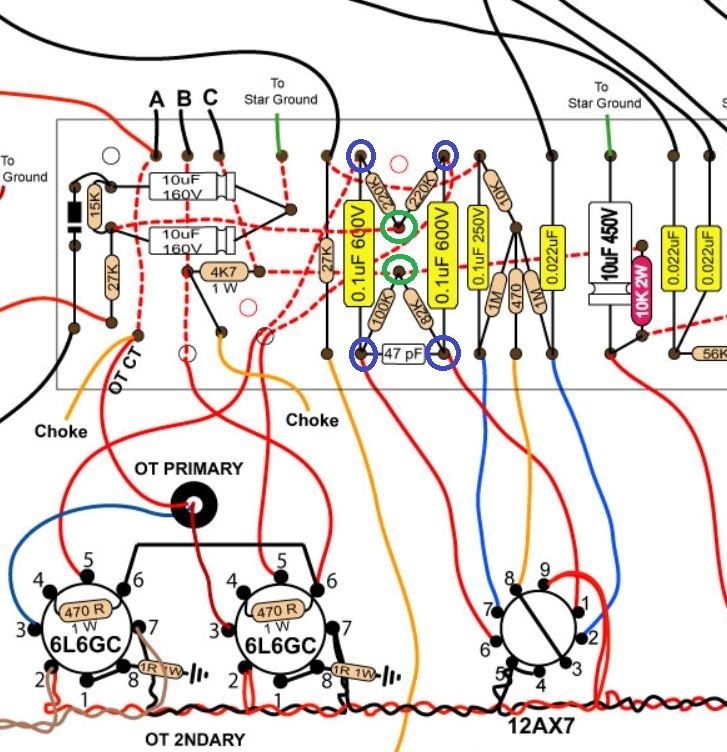I have a 5F6a Bassman power section with a hot rodded Marshall preamp homebrew. While it was on, but not being played through, a slight hum was slowly building up until it got loud enough for me to shut it down. New, good tubes didn't help. Pulled preamp tubes one by one until it stopped when the PI was pulled out. Dead quiet with the two preamp and PI tube out.
Checked the recorded hum with a frequency analyzer and it shows 120 Hz and harmonics, no 60 Hz. Hum gets much louder when bias pot is raised. Guitar signal still seems ok on top of the loud hum now that the bias is set to minimum. Quick check of power tube voltages are ok.
When I turn off the standby there is a long funny sucking squeaky sound with a rising tone.
Before I dive in with a big project of rebuilding the entire power section, I would like to find the offending power cap as a short cut Any ideas how to narrow this down to one cap? Thanks much.
Checked the recorded hum with a frequency analyzer and it shows 120 Hz and harmonics, no 60 Hz. Hum gets much louder when bias pot is raised. Guitar signal still seems ok on top of the loud hum now that the bias is set to minimum. Quick check of power tube voltages are ok.
When I turn off the standby there is a long funny sucking squeaky sound with a rising tone.
Before I dive in with a big project of rebuilding the entire power section, I would like to find the offending power cap as a short cut Any ideas how to narrow this down to one cap? Thanks much.

Comment